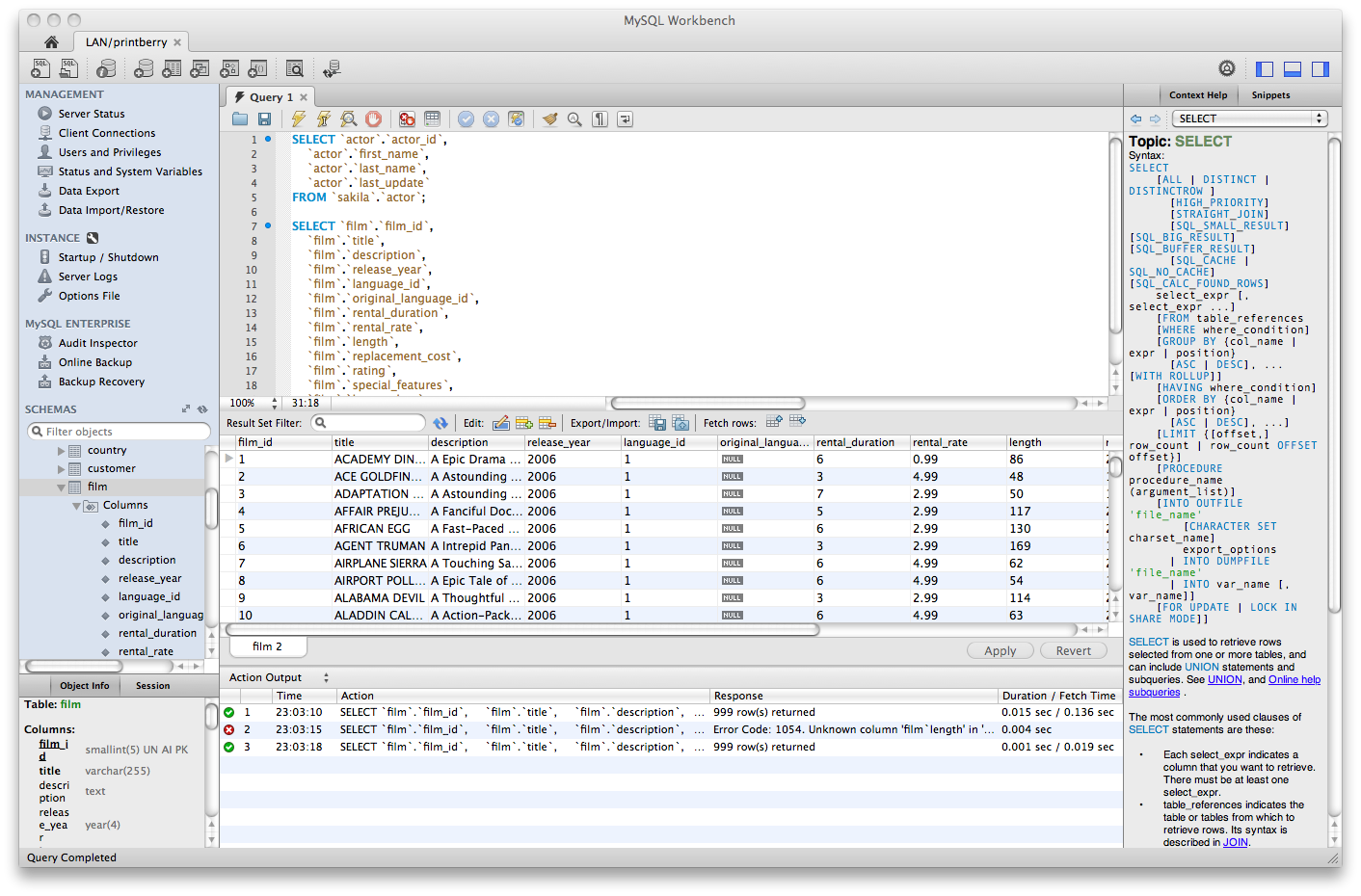How to configure MySQL Workbench. After you open MySQL Workbench on your computer, the next thing you need to do is set up a connection to your server. Follow these steps: Click New Connection in the left column. Give your connection a name and select your connection method.
This tutorial describes how to declare a variable (like user-defined, local, and system vars) in MySQL. We'll tell you the complete syntax and provide simple examples for clarity.
- MySQL Workbench Windows Prerequisites: To be able to install and run MySQL Workbench on Windows your system needs to have libraries listed below installed. The listed items are provided as links to the corresponding download pages where you can fetch the necessary files.
- (mysql-workbench-community-8.0.21-src.zip) MD5: 92a3395f089235b28e7a3f07bdc14489 Signature Red Hat Enterprise Linux 8 / Oracle Linux 8 (Architecture Independent.
MySQL puts up the below three ways:
1. Declare a user-defined variable
2. Declare a local variable
3. Declare a system variable
Corel painter 2016 15 0 0 689 download free. Let's start with looking at all of them one by one.
Declare Variable in MySQL
There are primarily three types of variables in MySQL. And each has its specific way to provide a declaration.
1. Declare a User-defined Variable
In MySQL, we can use the SET statement to declare a variable and also for initialization. After setting the value, it is accessible from anywhere in the script.
An user-defined variable always begins with the @ sign. See the syntax below:
While initializing the variable, we can use either a '=' or ':=' sign for assignment. However, it is better not to mix instead go with one convention only.
A user variable name is an alpha-numeric and can have characters like (., _, $). We can even have a hyphen (-) if we enclose the name in quotes, for example – @'my-var1″.
An alternative way to declare variables is by using the SELECT statement.
Mysql Workbench Select All Rows
Since we've not assigned any value, so the variables will assume NULL values. After running the above statement, the output is:
Mysql Workbench Select Schema
We can write a user variable name independent of its case. It means in uppercase or lowercase or a combination.
But, the variables have a limited length and can't go beyond 64 characters. Also, we can store the values of the following types:
Example
You can check out how we declare a variable using the SET statement. Also, we used the SELECT command to print the value.
After executing the above commands, the result is:
Find out another example:
After running the above statements, you get this result:
2. Local Variable Declaration
We define local variables in a program like stored procedures. MySQL provides the DECLARE statement to specify such a variable.
Also, we can combine it with the DEFAULT clause to assign some initial value. Otherwise, a local variable is NULL.
You can apply the following syntax to set up a local variable:
We should declare them before the cursor as MySQL treats them like stored proc parameters. Moreover, local variables are also independent of the case. Also, they follow the same naming rules as the user-defined ones do.
Note:- You can use DECLARE only inside a BEGIN … END block statement.
After reading the above explanation, you can run the below example.
Example

In this example, you see a stored procedure which performs addition operation. It also makes use of four local variables.
After running this example, the result comes as:
3. Declare System Variables
Let's now learn to declare a MySQL system variable.
The MySQL server provides a bunch of system variables and sets them to a default value. They are GLOBAL, SESSION, or MIX types.
Global vars – These persist during the lifecycle of the server.
Session vars – These remain active only for particular client sessions.
Moreover, we can observe the current status of a running server. The SHOW VARIABLES command or SELECT @@var_name does the needful.
Here is the example to fetch variables of the running MySQL instance.
After running these, the result comes as:
However, you can even set the system variables. See the examples given below:
We hope that after reading this tutorial, you should feel comfortable in concepts like 'Declare Variable in MySQL.' However, you may practice more with examples to gain confidence.
Also, if you aspire to be a DBA or a test engineer, then you should read our step by step MySQL tutorial to learn SQL from depth.
